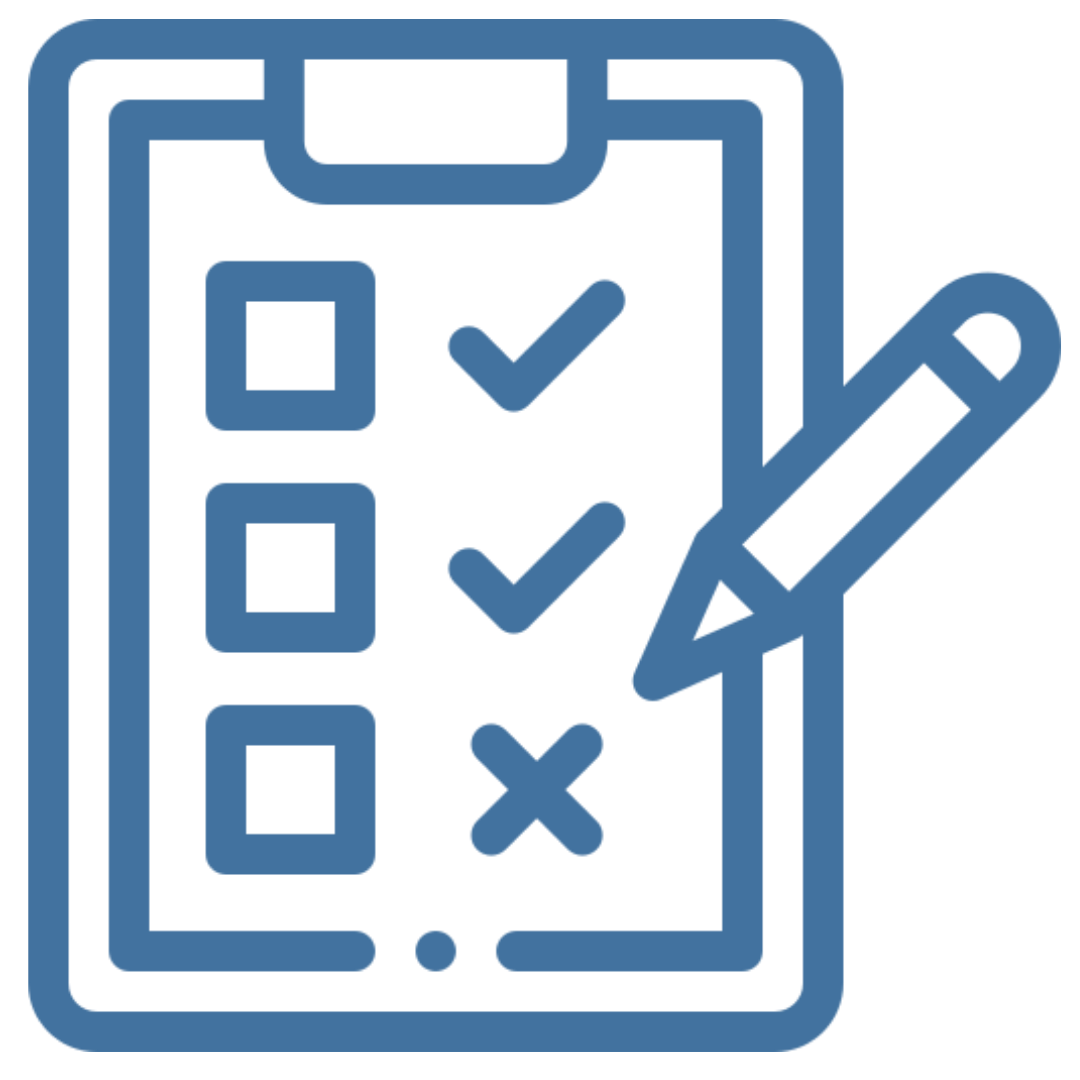Employee Business Expenses: A Clear Guide

A clunky expense process is a fast way to frustrate your team. When employees have to spend their own money for work, they expect a clear, simple, and quick way to get paid back. A well-designed reimbursement program does more than just keep your books clean; it shows your team you trust and value them. Getting it right is a key part of building a great company culture and retaining top talent. This article will break down how to create a straightforward policy for handling employee business expenses that removes guesswork, keeps your people happy, and ensures everyone is on the same page.
Key Takeaways
- Shift Your Strategy to Reimbursement: Since tax law changes prevent most employees from deducting work expenses, a clear and fair reimbursement policy is now essential. This approach keeps your team from paying out-of-pocket and ensures your business can properly write off the costs.
- Make Record-Keeping a Habit: To protect your business and ensure compliance, every expense needs a paper trail. Implement a consistent system for tracking receipts and logging key details—like the date, amount, and business purpose—for every transaction.
- Let a PEO Handle the Complexity: Creating compliant expense policies and managing reimbursements adds to your workload. A PEO partner provides the HR expertise to build a fair system, integrate it with payroll, and keep you up-to-date on changing tax laws.
What Counts as an Employee Business Expense?
When your employees spend their own money for work-related reasons, it's considered a business expense. Understanding what qualifies is the first step toward creating a fair and compliant reimbursement policy. Getting this right keeps your team happy and your books clean. It’s all about knowing which costs are part of doing business and which are personal. Let's break down the common types of expenses and the key difference between what you pay back and what you don't.
Common Examples of Business Expenses
So, what kind of spending are we talking about? Generally, a business expense is any cost that is both ordinary and necessary for your business. For your employees, this often includes things like travel for a conference, such as flights, hotels, and rental cars. It can also cover the tools or software they need to do their job, professional development courses, or union dues. Other common examples are mileage for work-related driving, business meals with clients, required uniforms or safety gear, and even certain home office costs for remote team members. Establishing clear guidelines on what your company covers helps everyone stay on the same page.
Reimbursed vs. Unreimbursed: What's the Difference?
This is a simple but crucial distinction. Reimbursed expenses are costs you, the employer, pay back to your employee. Unreimbursed expenses are work-related costs an employee covers out-of-pocket that are not paid back. Before 2018, employees could often deduct these unreimbursed costs on their personal tax returns. However, the Tax Cuts and Jobs Act changed the rules. Now, most W-2 employees can no longer deduct work expenses on their federal taxes, a change that lasts through 2025. This makes having a solid reimbursement plan more important than ever for attracting and retaining great talent, as it’s the primary way for them to be compensated for business-related spending.
Who Can Still Deduct Business Expenses?
Figuring out who can and can't deduct business expenses can feel like a moving target, especially after recent tax reforms. The biggest shift came from the Tax Cuts and Jobs Act (TCJA) of 2017, which changed the game for a lot of people. Before this law, most employees could write off work-related expenses that their employer didn't cover. Now, that deduction is on pause for the majority of W-2 employees until 2025.
This change has created a lot of confusion for both employees and employers. As a business owner, understanding these rules is key to guiding your team and structuring your own expense policies. While most traditional employees have lost this tax break for now, the rules are different for the self-employed. Plus, there are a few specific professions that are still allowed to claim these deductions. It’s also important to remember that federal and state laws aren't always in sync, adding another layer to the puzzle. Let's break down exactly who can still deduct business expenses and what you need to know to handle this correctly.
Which Jobs Qualify for Deductions After Tax Reform?
The Tax Cuts and Jobs Act put a temporary halt on deductions for unreimbursed employee expenses for most W-2 employees. This means that from 2018 through 2025, your typical salaried or hourly employee can't write off things like a new laptop for work or mileage for running company errands if you don't reimburse them. This makes having a clear and fair reimbursement policy more important than ever. When your team knows they can’t rely on a tax deduction, a straightforward reimbursement process becomes a major factor in employee satisfaction and retention. It ensures your people aren't left paying out-of-pocket for necessary business costs.
Special Deduction Rules for the Self-Employed
If you're self-employed, a freelancer, or an independent contractor, the rules are much different—and thankfully, more favorable. The changes from the TCJA did not affect your ability to deduct business expenses. You can still write off any costs that are both "ordinary and necessary" for your line of work. This includes everything from home office costs and software subscriptions to client lunches and travel. These deductions are typically reported on Schedule C (Form 1040), Profit or Loss from Business. This is one of the key advantages of being self-employed, but it also means meticulous record-keeping is non-negotiable to justify your claims if the IRS ever comes knocking.
Exceptions for Armed Forces Reservists and Educators
Even with the new laws, Congress left a few exceptions in place for certain W-2 employees. These specific groups can still deduct some unreimbursed work expenses on their federal tax returns. The list is quite specific and includes Armed Forces reservists, qualified performing artists, fee-basis state or local government officials, and employees with impairment-related work expenses. Educators can also still deduct up to a certain amount for out-of-pocket classroom supplies. These exceptions acknowledge the unique nature and financial burdens associated with these particular jobs, allowing them to continue claiming necessary expenses that aren't covered by their employers.
How State Laws Affect Your Deductions
Here’s where things can get a little more complicated. While federal law suspended the deduction for unreimbursed employee expenses, not all states automatically followed suit. Some states have their own tax codes that don't align with the federal changes, meaning your employees might still be able to deduct those expenses on their state tax returns. This creates a patchwork of rules across the country. As a business owner, especially if you have remote employees in different states, staying on top of these local nuances is critical for compliance. This is an area where having an expert partner can make all the difference in managing multi-state payroll and tax issues correctly.
What Expenses Can You Actually Deduct?
Once you’ve figured out who is eligible to claim deductions, the next question is what, exactly, you can write off. For many small business owners, navigating the world of tax deductions can feel like a chore, but it’s one of the most effective ways to lower your taxable income and keep more of your hard-earned money in the business. The key is understanding which expenses the IRS considers both "ordinary and necessary" for your line of work. An ordinary expense is one that’s common and accepted in your industry, while a necessary expense is one that’s helpful and appropriate for your business.
Keeping clear and consistent records is the foundation of this process. Without proper documentation, even the most legitimate expense can be disallowed if you’re ever audited. This doesn’t have to be complicated; a simple spreadsheet or a dedicated software can make all the difference. By tracking your spending throughout the year, you’ll be prepared and confident when tax season arrives. To help you get started, let's walk through some of the most common categories of deductible expenses. Understanding these rules can help you and your team make smarter spending decisions and ensure you’re not leaving money on the table.
Deducting Transportation and Travel
If you or your employees travel for work, many of the associated costs are deductible. This includes expenses for overnight business trips, such as airfare, hotels, rental cars, and taxis. The critical distinction is that the travel must be for business and require you to be away from your primary place of business overnight. It’s important not to confuse this with a daily commute; the cost of getting to and from your main workplace is a personal expense and not deductible. So, while that flight to a client meeting in another state is a valid write-off, your morning drive to the office is not. Keeping track of these business travel costs is a straightforward way to reduce your tax burden.
The Rules for Meals and Entertainment
Taking a client out for lunch or grabbing dinner while on an overnight business trip can also be a deductible expense, but you have to follow specific rules. Generally, you can only deduct 50% of the cost of business meals. The meal must have a clear business purpose, such as a discussion with a client or a strategy session with a colleague during a work trip. The days of writing off tickets to a sporting event or a concert are mostly behind us, as entertainment expenses are no longer deductible. Your best bet is to keep detailed records for those essential business meals, noting who you were with and what was discussed, to ensure you claim them correctly.
Claiming Your Home Office
For many business owners and remote employees, the home office is the new headquarters. If you use a part of your home exclusively and regularly for your business, you may be able to deduct a portion of your home-related expenses. This can include a percentage of your rent or mortgage interest, utilities, and insurance. The IRS is quite strict about what qualifies; the space must be your principal place of business and used solely for work. Working from your dining room table won't cut it. The IRS provides detailed guidance in its Publication 587, which explains exactly how to determine if you qualify and how to calculate your deduction.
Writing Off Professional Development
Investing in your skills and your team's expertise is crucial for staying competitive, and many of these costs are deductible. You can write off expenses for classes, workshops, books, or certification fees that help you maintain or improve the skills needed for your current job. For example, a project manager taking a course on a new software platform could deduct that cost. However, the education can't be to qualify you for a new career. If a business consultant decides to go to medical school, that tuition isn't a business expense. The focus is on continuing education that directly relates to your current role.
Deducting Work-Related Equipment and Supplies
The tools and supplies you need to do your job every day are often deductible. This category covers items that you use and that generally wear out within one year. Think of things like software subscriptions, printer paper, pens, or small tools specific to your trade. For instance, a freelance writer could deduct their subscription to a grammar-checking tool, and a landscaper could deduct the cost of new gloves and shears. These are considered necessary expenses for running your business. For larger purchases like a new computer or office furniture, the rules are a bit different, and you may need to depreciate the asset over several years instead of deducting the full cost upfront.
How to Properly Document Business Expenses
Keeping track of business expenses can feel like a chore, but it’s one of the most important habits you can build for your company’s financial health. Proper documentation isn’t just about staying organized; it’s about creating a clear, defensible record of your spending for tax purposes and accurate financial reporting. When you have a solid system in place, you protect your business, empower your employees, and make tax season significantly less stressful. Think of it as building a strong foundation—it takes a little effort upfront but prevents major headaches down the road. Let’s walk through the practical steps to get your expense documentation in order.
The Records and Receipts You Need to Keep
The golden rule of expense tracking is simple: if you don’t have proof, it didn’t happen—at least in the eyes of the IRS. To properly substantiate your business expenses, you need to hold onto key documents that serve as evidence. This includes original receipts, canceled checks, and detailed credit card statements. These records confirm the amount, date, place, and essential character of the expense. For example, a receipt for a client lunch should show the restaurant name, the date, and the total cost. It’s also wise to jot down who you met with and the business purpose on the back of the receipt. Keeping these documents organized is non-negotiable for any expense you plan to deduct.
Using Digital Tools to Track Expenses
Manually collecting and storing paper receipts is a recipe for lost documents and wasted time. This is where digital tools can be a game-changer. Implementing expense management software allows your team to snap photos of receipts on the go, automatically categorizing expenses and eliminating the need for a shoebox full of crumpled paper. These platforms create a centralized, searchable database of all your business spending, which is incredibly valuable for budgeting and financial analysis. For your employees, it means getting reimbursed faster. For your finance team, it means a streamlined approval process and a much smoother experience when it’s time to close the books or prepare for taxes.
How to Create a Detailed Expense Log
A digital tool is great, but it’s only as good as the information you put into it. A complete expense report or log is crucial for clarity and compliance. Each entry should act as a mini-story of the transaction. Be sure to include the date the expense occurred, the name of the employee who made the purchase, and the total cost. You’ll also want a brief but clear description of the item or service and the name of the vendor. For some expenses, like client meals or project-specific purchases, it’s helpful to add the name of the client or the project code. Creating a standardized employee expense report template ensures everyone on your team provides the same level of detail, making the review and approval process consistent and efficient.
Common Documentation Mistakes to Avoid
A few common slip-ups can turn expense reporting into a major compliance risk. The most frequent mistake is simply losing receipts or failing to submit them in a timely manner. Another is providing vague descriptions—an entry for "travel" is far less useful than "Airfare to meet with ABC Corp." It’s also critical to have a clear policy on what is and isn't a reimbursable expense. Before anyone makes a claim, they should be able to easily verify whether an expense is allowed. This proactive approach prevents awkward conversations and ensures your company only pays for legitimate business costs, saving you time and money in the long run.
Choosing the Right Expense Management Tools
With so many expense management tools available, how do you pick the right one? Look for a platform that automates the most tedious parts of the process. Features like optical character recognition (OCR) can scan a receipt photo and automatically pull key details like the vendor, date, and amount. You should also look for customizable approval workflows that let you set rules for who needs to sign off on different types of expenses. The goal is to find a tool that integrates smoothly with your accounting software to eliminate manual data entry. A PEO can often help you identify and implement these systems as part of a broader strategy to streamline your HR and financial operations, simplifying the entire PEO selection process from start to finish.
Setting Up an Employee Reimbursement Program
Putting a formal employee reimbursement program in place is a smart move. It shows your team you trust them, helps you track spending, and keeps everything fair and consistent. A well-defined program removes guesswork for your employees and makes life easier for your finance team. When done right, it can be one of the most effective cost-reduction strategies for your business, preventing confusion and uncontrolled spending before they start.
How to Create a Clear Reimbursement Policy
A great reimbursement policy is all about clarity. Start by defining exactly what counts as a reimbursable expense—things like travel, office supplies, or client meals. It's also wise to set clear spending limits, like a per diem for food on business trips. Always require proof of purchase, such as a receipt, to keep everything accountable. You should also outline the process itself: how do employees submit expenses, and when can they expect to be paid back? While paper forms are an option, using expense management software can make the entire process smoother for everyone involved.
Accountable vs. Non-Accountable Plans
When you design your program, you’ll choose between two main types of plans: accountable and non-accountable. With an accountable plan, employees must provide receipts for their expenses and return any money they didn’t spend. These reimbursements are not considered taxable income. A non-accountable plan is simpler—you might give an employee a flat allowance and not require receipts or the return of extra cash. However, under a non-accountable plan, the IRS treats the reimbursement as taxable wages. Understanding the difference is crucial for managing your expenses and ensuring you’re following tax rules.
What the IRS Requires for Reimbursements
The IRS has specific guidelines for what qualifies as a legitimate business expense. For a reimbursement to be non-taxable under an accountable plan, the expense must be both "ordinary and necessary." An ordinary expense is one that’s common in your line of work, while a necessary expense is one that is helpful and appropriate for your business. For example, a plane ticket to a client meeting is both ordinary and necessary. Familiarizing yourself with the rules on IRS Form 2106, which covers employee business expenses, can help you build a compliant and effective reimbursement policy from the start.
Keeping Up with Tax Law Changes
Tax laws are not static; they shift and evolve, and keeping your business compliant can feel like a full-time job. For small business owners, these changes can have a significant impact on everything from payroll to employee benefits. One of the most substantial recent shifts came from the Tax Cuts and Jobs Act (TCJA), which completely changed the landscape for deducting employee business expenses. Understanding these new rules is crucial for structuring your company’s policies in a way that benefits both your business and your team.
Staying on top of tax code updates is about more than just avoiding penalties. It’s about making strategic decisions. When you know the rules, you can create smarter, more efficient systems for things like expense reimbursements. This not only ensures you’re compliant but also helps you attract and retain great employees by offering clear and fair policies. Let’s break down what the TCJA means for your business and explore the best strategies for handling employee expenses now. This is where having an expert partner can make all the difference, turning a complex administrative burden into a streamlined process.
How the Tax Cuts and Jobs Act Changed Deductions
Before 2018, if your employees incurred work-related expenses that you didn’t reimburse, they could often deduct those costs on their personal tax returns. The Tax Cuts and Jobs Act put a stop to that for most people. This major tax reform suspended the miscellaneous itemized deduction for unreimbursed employee expenses from 2018 through 2025.
This means that for the vast majority of W-2 employees, out-of-pocket costs for things like travel, office supplies, or professional development are no longer deductible on their federal income taxes. This change places more importance on the employer’s role in handling business expenses, making a clear and comprehensive reimbursement policy more critical than ever.
What Are the Current Deduction Limits?
While the TCJA eliminated the deduction for most employees, a few specific groups are exempt from this rule. These individuals can still deduct certain unreimbursed work-related expenses. The IRS makes exceptions for:
- Armed Forces reservists
- Qualified performing artists
- Fee-basis state or local government officials
- Employees with impairment-related work expenses
In addition, K-12 educators can still deduct up to $300 for unreimbursed classroom expenses, though this is a separate deduction with its own rules. For nearly everyone else, the door to deducting unreimbursed employee expenses on a federal return is closed until at least 2026, unless Congress makes further changes to the law.
Understanding Form 2106 Requirements
For those employees who still qualify to deduct business expenses, they will need to use Form 2106, Employee Business Expenses. This is the official IRS document for calculating and claiming these costs. To be deductible, an expense must be considered both "ordinary" and "necessary" by the IRS.
An "ordinary" expense is one that is common and accepted in your specific trade or industry. A "necessary" expense is one that is helpful and appropriate for your business. It doesn’t have to be indispensable to be considered necessary. Understanding these definitions is key, as they form the basis of what the IRS will accept as a legitimate business expense, whether it’s being deducted by an employee or reimbursed by your company.
Exploring Alternative Tax Strategies
Since most employees can no longer deduct work expenses, the best approach for businesses is to establish a formal reimbursement plan. By creating an accountable plan, you can reimburse employees for business expenses without that money being counted as taxable income for them. At the same time, your business can deduct the full amount of the reimbursement as a business expense. It’s a win-win.
An accountable plan simply requires that the expenses have a business connection, are adequately substantiated with receipts within a reasonable time, and that any excess reimbursement is returned. Without a formal plan, reimbursements are considered wages and are subject to income and payroll taxes. Setting up a clear policy ensures fairness, compliance, and makes your company a more attractive place to work.
How a PEO Simplifies Expense Management
Managing employee expenses goes far beyond just collecting receipts and cutting checks. It involves creating clear policies, ensuring compliance with labor laws, and handling the administrative load of reimbursements, payroll deductions, and benefits contributions. For a small business owner, this can quickly become a major time sink and a source of costly errors. This is where partnering with a Professional Employer Organization (PEO) can make a significant difference. A PEO acts as a co-employer, taking on many of these complex HR tasks so you can focus on running your business. By centralizing HR functions, a PEO brings clarity and efficiency to your entire expense management process.
Streamline Expenses with a PEO
One of the most immediate ways a PEO simplifies expense management is by consolidating benefits administration and payroll. Instead of juggling multiple vendors for health insurance, retirement plans, and other perks, the PEO handles it all. They manage enrollment, answer employee questions, and process payroll deductions accurately every time. This integration means fewer administrative headaches and a reduced chance of errors. Because PEOs represent thousands of employees, they can often provide access to higher-quality, more affordable employee benefits than a small business could secure on its own, which helps manage one of your largest expense categories more effectively.
Create Better Expense Policies with Expert Help
Are your expense policies clear, fair, and legally compliant? Crafting a solid reimbursement policy that covers travel, meals, and home office expenses can be tricky. A PEO provides access to a team of HR experts who can help you develop and implement effective policies tailored to your business. They stay on top of changing regulations to ensure your reimbursement practices are always compliant, reducing your company’s risk. With their guidance, you can create a system that’s easy for your team to understand and follow, which prevents confusion and disputes down the line. This expert support is a core part of our process when we match you with the right PEO.
Why a PEO Partner Makes Expense Handling Easier
While a PEO doesn’t make business expenses disappear, it can help you manage them more strategically. By bundling services like workers’ compensation, payroll, and benefits, a PEO often provides more predictable, stable costs. This makes budgeting easier and helps you avoid the surprise expenses that can derail a small business. A PEO partner can also identify key cost-reduction strategies, from securing better insurance rates to improving workplace safety to lower workers' comp premiums. Ultimately, a PEO simplifies the financial side of being an employer, giving you a clearer picture of your labor costs and helping you operate more efficiently.
Related Articles
- How Small Businesses Can Create Employee Benefits Packages That Boost Satisfaction | Inclusive PEO Brokers
- PEO Payroll Services | How They Simplify Your Business Operations
- PEO Payroll Services: What They Are and How They Simplify Your Business Operations | Inclusive PEO Brokers
- What Is a PEO? HR Support and Benefits for Small Businesses | Inclusive PEO Brokers
- Faq | Inclusive PEO Brokers
Frequently Asked Questions
Why is having a formal reimbursement policy so important now? The biggest reason is that recent tax law changes took away the ability for most employees to deduct unreimbursed work expenses on their personal tax returns. Before, if you didn't pay them back for a work-related cost, they could often write it off. Now they can't. A clear, formal policy ensures your team isn't left paying out-of-pocket for business necessities, which is crucial for keeping morale high and attracting good people. It also protects your business by setting clear rules and preventing uncontrolled spending.
What's the main difference between an accountable and a non-accountable plan? Think of it in terms of taxes and paperwork. With an accountable plan, your employees submit receipts to prove their spending, and you reimburse them for those exact costs. This money is not considered taxable income for them, and your business can deduct it. A non-accountable plan is simpler upfront—you might give a flat stipend and not require receipts. However, the IRS treats that money as wages, meaning both you and your employee have to pay payroll taxes on it.
Can my remote employees still claim a home office deduction? For the most part, no. If they are W-2 employees, the Tax Cuts and Jobs Act suspended the home office deduction for them through 2025. This is a common point of confusion. The deduction is still available for self-employed individuals or independent contractors, but not for traditional employees. This makes it even more important for you to have a clear policy on reimbursing remote workers for necessary home office supplies or internet costs.
My business is small. Do I really need special software to track expenses? While you don't have to, using expense management software can save you a surprising amount of time and prevent major headaches. Instead of chasing down paper receipts and manually entering data, these tools let your team snap a photo of a receipt and submit it instantly. This creates a clean, digital record that makes bookkeeping and tax prep much simpler. It also helps you get a clearer picture of where your money is going.
How does a PEO fit into managing employee expenses? A PEO helps by streamlining the entire administrative side of your business, which includes expense management. They can help you create a compliant and effective reimbursement policy and integrate it directly into your payroll system. This ensures reimbursements are handled accurately and on time. By bundling services like payroll, benefits, and HR support, a PEO simplifies your financial oversight and helps you manage your overall labor costs more strategically.
Seeking a different solution? Meet Your Business Needs
.png)



